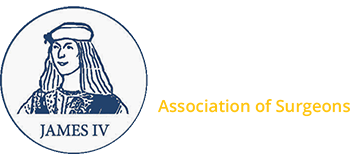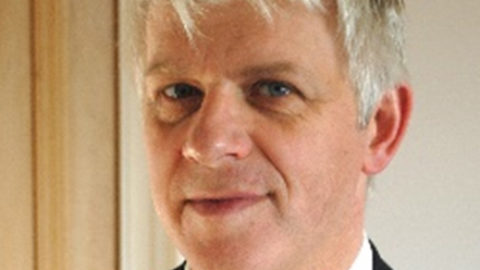Jin He, MD, PhD, FACS
Chief, Division of HPB Surgery
Paul K. Neumann Professorship in Pancreatic Surgery
Associate Professor of Surgery and Oncology
James IV Association of Surgeons US Traveler 2022-2023
European Travels:
• October 16th to October 29th 2022
• May 23rd to June 2nd 2023
It is a tremendous honor and privilege to receive this traveling fellowship. I am very grateful to
the James IV Association for this superb opportunity.
As an HPB surgeon with research focusing on pancreatic surgery, I hope to gain insight and a
better understanding of how our European colleagues manage patients with pancreatic
diseases. Therefore, I chose four world-renowned institutions in pancreatic surgery with the
goal of sharing surgical experiences, consolidating existing relationships, and cultivating new
collaborations during my visit.
Part 1: University Hospital, University of Heidelberg
Heidelberg is a scientific hub in Germany and home to several internationally renowned
research facilities adjacent to University of Heidelberg, the oldest German university, including
the European Molecular Biology Laboratory (EMBL), Max Planck Institutes, and DKFZ. I visited
Prof. Markus Büchler at the University Hospital Heidelberg, the leading world-renowned
Hepato-Pancreato-Biliary surgery program in the EU. Prof. Büchler is an extremely busy person
who has numerous responsibilities at the departmental, institutional, national, and
international levels. He loves to operate. I was lucky to observe him perform two operations.
One is a large RP sarcoma, which was deemed unresectable at other hospitals. Prof. Büchler
demonstrated his surgical talents and knowledge during this complex multi-organ resection and
multiple vessel reconstructions. He must have been exhausted when he finished the IVC
reconstruction. Different from the US system, the Heidelberg surgeon stands on the right side
of the table. The assisting surgeon on the left side of the table is only responsible for exposure
without knot tying or suturing. Prof. Büchler is very supportive of robotic pancreatectomy. As a
world-renowned senior surgeon, he is never against any new technology in the surgery field. I
witnessed his robotic distal pancreatectomy and had a lovely discussion with him about robotic
pancreas surgery.
Heidelberg program has the largest HPB volume in Europe, with around 700 pancreas surgery
cases per year. The HPB team has multiple experienced surgeons and at least 5 operating
rooms per day. I enjoyed interacting with all of them in the OR, ICU, daily morning sign-out and
evening conferences led by Prof. Martin Schneider, the acting director for the daily activity of
the whole department. I had a lovely German dinner with Prof. Martin Loos, who leads the
robotic pancreatectomy program. Dr. Felix Nickel gave me a tour of the MIS simulation lab at
the University. He is very excited about in applying biotissue and AI to facilitate training in MIS
HPB surgery. He is leaving with Prof. Thilo Hackert, the director of the European Pancreas
Center, who is heading to the University of Hamburg as the new department chair. I also
observed open pancreas surgeries by Professor Beat Müller (the current chair of surgery at the
University of Basel, Switzerland) and Prof. Arianeb Mehrabi, who is also in charge of the liver
transplant program.
I shared my practice and program building in robotic pancreatectomy during my grand round to
the Department of General, Visceral and Transplantation Surgery.
My local host, Dr. Benedict Kinny-Koster, took me for a walk on the Karl Theodor Bridge,
commonly known as the Old Bridge (Alte Brücke), crossing the Neckar river. He and I meet daily
to discuss research projects and career development while enjoying German food and beer.
Part 2: Amsterdam UMC, University of Amsterdam
After a memorable week at Heidelberg, I boarded the train from Frankfurt to Amsterdam.
I met Prof. Marc Besselink for the morning sign-out meeting and ward round before going to
the operating room. The pancreas surgery program led by Prof. Marc Besselink at Amsterdam
UMC has contributed numerous clinical trials in pancreatology. I observed their robotic
Whipple, which used a two-surgeons model. Marc and Dr. Olivier Busch did the case with Marc
at the bedside to assist and dissect during the resection phase. After the Whipple specimen was
removed, the team took a 15-minute lunch break. Marc switched to the console for the
reconstruction of PJ and HJ. The gastrojejunostomy was done in an extracorporeal fashion. I
shared my experience with robotic pancreatectomy and convinced Marc to switch to an
intracorporeal gastrojejunostomy. I am glad my surgery videos helped convince Marc.
Marc also took me to the pancreas multidisciplinary discussion. I was blown away by witnessing
numerous ongoing clinical trials in surgery, medical oncology, radiation oncology,
gastroenterology, pain service, etc. Every single patient was on multiple clinical trials. I enjoyed
the discussion on managing patients with pancreatic cancer and shared my experience at JHH.
Marc gave me a tour of the research facility with more than 30 PhD students and fellows
working on those clinical studies under his leadership. This incredible setup and relentless
teamwork are why the AMC is such an effective academic powerhouse.
I also joined the weekly Zoom discussion of LAPC management organized by the Dutch
Pancreatic Cancer Group, which has achieved many milestone studies across the entire
spectrum of pancreatic cancer. Marc, with his boundless energy, is instrumental in this process.
I am sure the numerous coffee machines across the campus contribute to the team’s energy.
And the coffee is free.
Part 3: University of Glasgow
The second leg of my traveling in 2023 started at the University of Glasgow. I flew from BWI to
Heathrow and arrived in Glasgow on May 23rd. My local hosts, Prof. David Chang and Prof. Nigel
Jamieson had arranged a wonderful itinerary for me to interact with their clinical team and
research group.
With David’s company, I joined the weekly multidisciplinary pancreas case discussions and
toured their inpatient ward. I observed the open Whipple done by Mr. Euan Dickson. Euan was
the James IV traveler in 2019 and visited Johns Hopkins. We had lovely discussions in his
operating theater. The robotic pancreas surgery has not been widely adopted in the operating
theater at Glasgow. I shared my experience on robotic pancreatectomy during my grand round
to the Lister Department of Surgery at the Glasgow Royal Infirmary.
Under the leadership of Prof. Andrew Biankin, David has built up a very productive research
enterprise on Precision Medicine for Pancreatic Cancer. He is leading the national Precision-
Panc study across the UK. We toured his lab at the Wolfson Wohl Cancer Research Centre of
the University of Glasgow. I enjoyed the presentations from his lab members and the casual
group dinner afterward.
Nigel gave me a tour of the historic Glasgow Royal Infirmary and its beautiful surroundings. He
also arranged the dinner with the whole group of surgery faculties at the amazing Royal College
of Physicians and Surgeons of Glasgow. Having a dinner in this historic place with a group of
Glasgow surgeons was absolutely a highlight of this trip. I indulged myself to the tremendous
surgical history and was excited to read about those achievements with portraits of Prof. Lister,
Prof. Pringle, etc. I had a wonderful discussion on pancreatic cancer with two other James IV
travelers: Prof. David Chang and Mr. Euan Dickson.
Part 4: University of Verona
I left Glasgow and boarded the flight to my final visiting site, the Pancreas Institute at the ‘G.B.
Rossi’ Hospital, University of Verona. The Pancreas Institute is the first Italian institution entirely
committed to pancreatic diseases, with a dedicated multidisciplinary team that includes
Surgeons, Gastroenterologists, Radiologists, Pathologists, and Medical Oncologists.
I hoped to meet Prof. Claudio Bassi, the founder of the Pancreas Institute. Unfortunately, he
was in the ICU and passed away on July 11th, 2023. Prof. Bassi was a true giant of pancreas
surgery. This is a huge loss to the international pancreas community.
My local host is Prof. Giuseppe Malleo, whom I have known for years. Giuseppe and Dr. Antonio
Pea took me to their morning sign-out. I met their resident team and participated in their
Pancreas Round, a preoperative conference to review scheduled cases for next week. I really
enjoyed the meeting with all the young trainees and delivered a grand round at the Pancreas
Institute. They asked many great questions during my talk on robotic pancreatectomy.
I also met Prof. Claudio Luchini, a pancreas pathologist, who has been a wonderful collaborator
with the Johns Hopkins pancreas group.
The operating room setup was unique as they are on two different campuses. Robotic surgery
was only adopted for distal pancreatectomy. The Verona group plans to adopt the robotic
approach in Whipple surgery once the operating rooms are unified into one campus.
I had a unique opportunity to pay a one-day visit to the pancreas program at the University of
Padua with Prof. Giovanni Marchegiani. He left University of Verona and took a new leadership
role at Padua very recently. University of Padua is only 40 minutes away from Verona by train.
It is the second-oldest university in Italy. The tremendous history of this city blew me away.
During the farewell dinner, I was super grateful to Prof. Roberto Salvia, the current director of
the Pancreas Institute, who joined us directly from the airport after returning from a national
meeting.
Final thoughts:
I want to thank the James IV Association of Surgeons for giving me this opportunity, which has
been one of the highlights of my surgical career. I thank all my host surgeons who created
amazing itineraries and showed me their home programs.
I thank Dr. Cameron and Dr. Higgins for sponsoring me, my partners in JHH HPB Surgery for
covering emergencies, and my wife’s support during my extended absences.
Without question, these traveling experiences afforded by the James IV Traveling fellowship
have opened my mind and further fostered research collaborations. The opportunity to be a
James IV traveling fellow will influence me forever.



You must be logged in to post a comment.